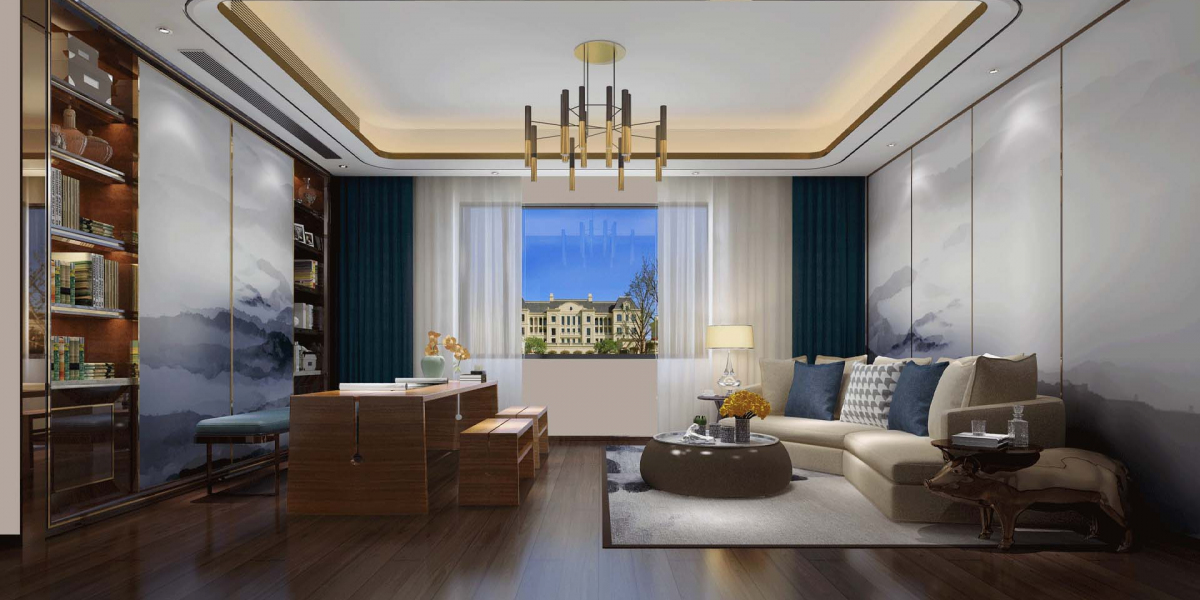Transitional home interior design strikes the perfect balance between classic elegance and contemporary sophistication, offering a timeless yet updated look that appeals to a wide range of tastes. Rooted in traditional design principles while embracing modern elements, transitional interiors exude warmth, comfort, and understated luxury. In this section, we'll explore the key characteristics of transitional home interior design and provide tips for achieving this effortlessly elegant style in your residential spaces.
1. Harmonious Blend of Styles:
Transitional home interior design seamlessly blends elements from traditional and contemporary styles to create a cohesive and harmonious look. Embrace classic design principles such as symmetry, balance, and proportion, while incorporating modern accents and finishes for a fresh and updated feel. Mix traditional furniture silhouettes with clean-lined upholstery, and layer classic patterns with bold textures to create visual interest and depth in the space. By striking the right balance between old and new, you'll achieve a transitional aesthetic that feels timeless yet current.
2. Neutral Color Palette:
A neutral color palette forms the foundation of transitional home interior design, creating a serene and sophisticated backdrop for furnishings and decor. Choose timeless hues such as soft whites, warm grays, and subtle beiges for walls, ceilings, and floors to create a sense of cohesion and tranquility in the space. Use accents of color sparingly to add interest and dimension, opting for muted tones or pops of color that complement the neutral palette without overpowering the room. By keeping the color palette understated and elegant, you'll create a timeless look that withstands the test of time.
3. Refined Furnishings and Finishes:
Transitional interiors feature refined furnishings and finishes that exude sophistication and understated luxury. Choose furniture pieces with classic silhouettes and timeless appeal, such as rolled-arm sofas, tufted armchairs, and pedestal tables, in high-quality materials such as wood, leather, and metal. Opt for finishes that strike a balance between traditional and contemporary, such as matte black hardware, brushed nickel fixtures, and polished chrome accents. By selecting furnishings and finishes that are both elegant and enduring, you'll create a sense of refinement and sophistication in the space.
4. Layered Textures and Patterns:
Layered textures and patterns add depth and visual interest to transitional interiors, creating a sense of warmth and coziness. Incorporate a mix of textures such as plush rugs, velvet upholstery, and natural fibers like jute and sisal to add tactile richness to the space. Mix classic patterns such as stripes, plaids, and damasks with contemporary prints like geometric designs and abstract motifs to create a dynamic and layered look. By layering textures and patterns, you'll create a visually compelling environment that invites relaxation and comfort.
5. Balanced Lighting Design:
Balanced lighting design is essential in transitional home interior design, as it enhances the ambiance and functionality of the space while highlighting key architectural features and furnishings. Incorporate a mix of ambient, task, and accent lighting to create layers of illumination that can be adjusted to suit different activities and moods. Choose lighting fixtures with clean lines and timeless designs, such as chandeliers, sconces, and pendant lights, in finishes that complement the overall aesthetic of the room. By achieving a balance of natural and artificial light sources, you'll create a welcoming and well-lit environment that feels inviting and comfortable.
6. Emphasis on Comfort and Functionality:
Transitional interiors prioritize comfort and functionality, creating spaces that are both stylish and livable. Choose furniture pieces that are as comfortable as they are chic, with plush cushions, supportive seating, and durable upholstery fabrics. Incorporate storage solutions such as built-in cabinetry, ottomans with hidden compartments, and multifunctional furniture pieces to maximize space efficiency and reduce clutter. By prioritizing comfort and functionality, you'll create a home that is not only beautiful but also practical and conducive to everyday living.
7. Personalized Accents and Décor:
Personalized accents and décor add character and charm to transitional interiors, infusing the space with personality and warmth. Display meaningful artwork, family photos, and cherished heirlooms as decorative accents that tell a story and reflect your individual style. Incorporate accessories such as throw pillows, rugs, and decorative objects in your favorite colors and patterns to add a personal touch to the room. By incorporating personalized accents and décor, you'll create a home that feels uniquely yours and invites you to relax, unwind, and make lasting memories.
Conclusion
Transitional home interior design offers a timeless and sophisticated approach to residential living, blending classic elegance with contemporary flair to create spaces that are both refined and inviting. By embracing a harmonious blend of styles, a neutral color palette, refined furnishings and finishes, layered textures and patterns, balanced lighting design, emphasis on comfort and functionality, and personalized accents and décor, homeowners can achieve an effortlessly elegant look that stands the test of time. Whether you're drawn to classic sophistication, modern simplicity, or a mix of both, transitional interiors offer a versatile and adaptable style that adapts to your lifestyle and evolves with your tastes.








